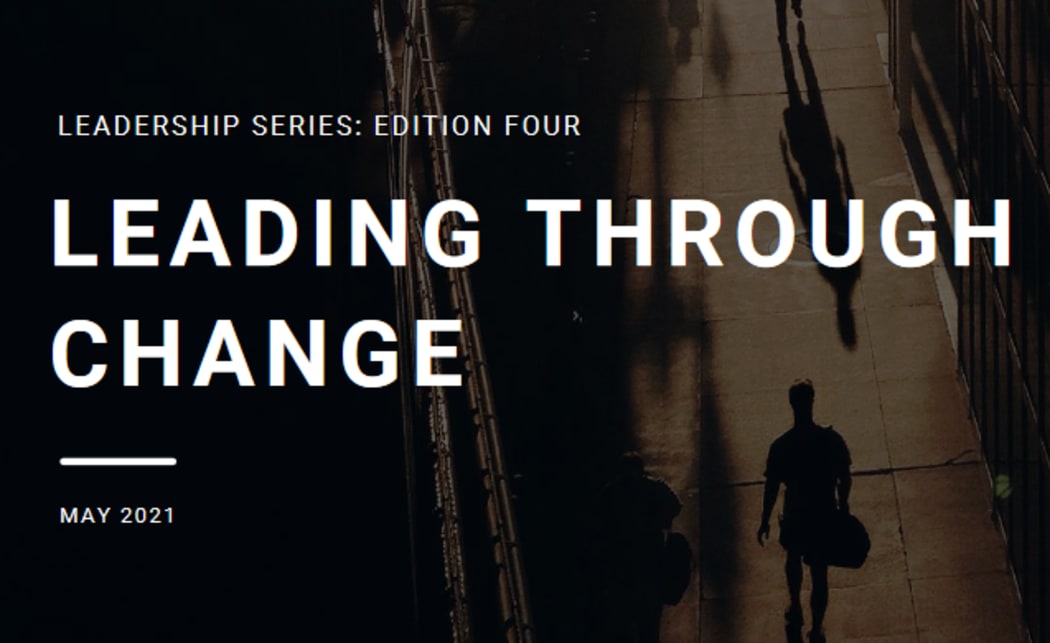A new analysis finds media coverage is more important than ever after Covid-19 in shaping our perception of leaders’ success, trustworthiness and transparency (or a perceived lack of them). But - as we hear so often these days - trust in the media themselves is falling fast. So how does that work?

Photo: supplied
Newshub’s latest Reid Research poll last weekend was taken at a time when National Party leader Judith Collins was in the media talking almost exclusively about race - and the spectre of separatism.
This heightened the media’s interest in the results - and after the poll, she was in the media talking about little other than the slump the poll recorded in support for her as ‘preferred PM’.
No such drama for the actual PM.
“Prime Minister Jacinda Ardern has topped Fortune Magazine's list of the world's greatest leaders, beating out a number of influential people - including Dolly Parton,” said the Herald last Monday - and many other outlets.
“The publication cited her leadership through Covid-19 as the catalyst for her top ranking,” said the Herald (referring to Ardern - not Dolly Parton).
Fortune may not know much about what’s not gone well for the PM and her government this past year - or whether she really displayed better leadership than her runners-up in the rankings - the developers of the Messenger RNA delivery system that makes Covid-19 vaccines effective.
But all this coverage would leave a pretty clear impression on people following the media.

Ngaire Crawford, Isentia head of insights Photo: supplied
New research based on thousands of media reports about leaders and leadership in the past year shows what the media say about leaders and their leadership still seems to be critical to their popularity and their perceived trustworthiness and effectiveness - in spite of surveys recording declining trust in the news media these days.
Media monitoring firm Isentia has been studying coverage of leadership since 2018.
Isentia’s previous research concluded that leaders who are ‘out there’ more in the media reap rewards when the news is bad - and the latest report concluded the Covid-19 crisis has amplified that.
Isentia concluded failures of leadership are featured so commonly in media coverage that they heavily influence the trust that the public have in organisations, governments and communities (Judith Collins can relate to that at the moment) .
The research is intended to inform corporate and public sector clients about changing trends in - and styles of - leadership and the influence the media has on them.
But there are also findings for the media to ponder.
This research also compared mainstream media coverage in New Zealand and Australia after March 2020.
It zeroed in on the coverage of two leaders thrust into media spotlight - New Zealand’s Director-General of Health Dr Ashley Bloomfield - and Victoria’s state Premier Dan Andrews.
For long periods, both had to persuade the public almost daily that lockdowns were necessary and progress was being made.
But while the former was portrayed as a good leader in most media coverage - and it even fueled affection for him among some people - the latter suffered from hostile press coverage and frequent allegations of incompetence.
That’s partly a reflection of the fact that Dr Bloomfield is a public servant while Andrews is an elected representative aligned with the federal government opposition and many Australian news media have political leanings.
But in spite of that, Isentia’s research found a startling difference in trans-Tasman coverage. It was twice as likely that Australian media would report on leadership positively rather than negatively; New Zealand media had 2.5 times as many negative mentions of leadership as there were positive.
‘The year of the press conference’
Daily televised and streamed press conferences were a novel feature of the Covid-19 crisis. Political critics claimed the government used them for longer than required because the exposure would be beneficial in an election year.
“Daily press conferences became a warm blanket and appointment viewing during lockdowns. This prolonged experience of press conferences has the potential to change habits and expectations around communication of official information, as well as the potential to prompt the desire to see information in the same way it is presented to media,” the report concludes.
Isentia’s Leading Though Change report distinguishes “the performance of transparency” from “actual transparency” – and says while some leaders benefited from that, the reporters and their media outlets did not.

Isentia's report on how the media view business and political leaders in action. Photo: supplied
“The journalists are reduced to [a] faceless, and in some cases nameless, figures shouting questions. These questions are often repeated across multiple journalists when the answer doesn't quite meet expectations,” the report said.
“As audiences became more comfortable with the press conference format, journalists faced constant online criticism for their role and the type of questions they asked, and were often viewed as an adversary for the prime minister to overcome,” said the report.
Isentia also found that in the wake of mass-movements like Black Lives Matter there is "a clear demand for leaders and organisations to take a social or political stance that they might not have previously taken".
"While the natural instinct in response to this might be to hide, it is important to consider the social and cultural context in which communication takes place. We can see a strong desire for ethical behaviour, and an expectation that communication with audiences will be clear, leaving little room for absence," the report said.


